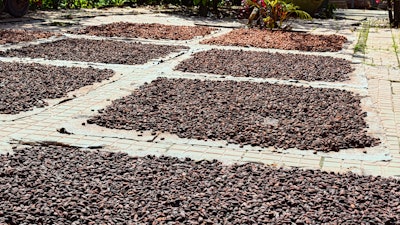
Producing chocolate, one of the world’s most beloved sweets, is a multistep process beginning with freshly harvested cocoa beans. People have been experimenting with chocolate-making for millennia, and even today, new methods are still being introduced. Now, researchers reporting in ACS’ Journal of Agricultural and Food Chemistry have found that an alternative processing step called “moist incubation” results in a fruitier, more flowery-tasting dark chocolate than the conventional fermentation process.
After cocoa beans are harvested, they are traditionally covered in banana leaves and left for a few days to ferment. During this time, microbes in the environment degrade the pulp surrounding the beans, heating and acidifying them. This causes biochemical changes in the beans that reduce bitterness and astringency, while developing the pleasing flavors and aromas associated with chocolate. Recently, scientists developed an alternative, non-microbial approach called moist incubation, in which dried, unfermented cocoa nibs are rehydrated in an acidic solution, heated for 72 hours and then re-dried. The method, which is faster and more easily controlled than fermentation, produced similar aromas in beans as fermentation, with some differences. Irene Chetschik, Ansgar Schlüter and colleagues wanted to find out how the taste and aroma of the final product — chocolate — compared when using moist incubation versus traditional fermentation.
The researchers made chocolate bars using moist incubated or fermented dried cocoa beans, as well as unfermented beans as a control. Sensory panelists said the moist incubated sample had higher intensities of fruity, flowery, malty and caramel-like aromas, whereas the fermented one had higher roasty aroma notes, and the bar made from unfermented beans had a primarily green aroma. The panelists rated the moist incubated sample as the sweetest-tasting, while the unfermented chocolate was the most bitter and astringent. Identification of aroma compounds by gas chromatography (GC)-olfactometry and their subsequent quantitation by GC-mass spectrometry revealed higher levels of malty compounds called Strecker aldehydes and lower amounts of roasty compounds called pyrazines in the moist incubated chocolate compared with the fermented one. The researchers concluded that moist incubation produces a chocolate with a pleasant aroma and taste and could, therefore, serve as an alternative postharvest treatment.
The authors acknowledge funding from Zurich University of Applied Sciences (ZHAW).






















